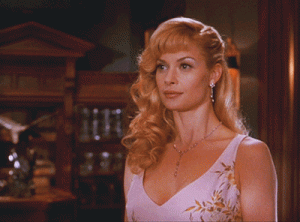Dear Ignorant People,
Do you avoid new information that doesn’t mesh with your worldview?
Do you quickly change the subject if someone comes out to you?
Do you experience a tongue twist pronouncing names that divert from Sarah, Anna, or Jessica?
Have your friends noticed you clutching your purse when a mysterious Black man walks by?
Have you ever hypersexualized a woman to bond with your bisexual female friend?
Have you ever felt compelled to say, “Good guys always finish last?”
Do you feel anxious when you don’t know someone’s pronouns?
Are you afraid of using someone’s correct pronouns so you just refer to them by their name?
Do you mistake the same three black/Asian people but somehow can distinguish 20 Laurens from one another?
Do you assume your roommate is Mexican just because they know Spanish?
The bad news is: your ignorance is deliberate. The good news: it’s treatable!
We’ve diagnosed you with a propensity towards disciplined knowledge. By thinking that the world is predictable and well-ordered, you’ve closed yourself off to the ideas and perspectives of people outside your worldview.
We notice you may also have tendencies towards “seeing like a state,” which was first brought to our attention by James C. Scott (MD). You tend towards orderliness and ease rather than empathy, and you choose the path that is easiest for you and fits in your pre-established worldview. Tragically, you just don’t know as much as you think you do.
We invite you to consider a situation from another person’s perspective, and then use your newfound empathy to alter your behavior going forward. It’s not on the marginalized person who is being disrespected to educate you, it’s time for you to treat your ignorance yourself. Repeat as necessary (once daily at minimum).
Doctor Julien Carter has diagnosed you will subconscious heteronormative ignorance. The treatment plan is to unlearn the normative practices that dictate your everyday life in society. This treatment will include a daily dose of 25mg of learning that normality made it possible to discuss race and sexuality within the restraints of a dominant cisgender heteronormative power structure without fully engaging in the relations of power in which they were embedded. In simpler terms understand that cis-white-heterosexual people are in fact not the default. In addition, you will receive a weekly dose of 130mg of understanding that norms are a social construct that is always evolving, so therefore when cis-white-hetero norms are applied over norms that include the perspectives of those who have not had dominant power for centuries and centuries, you will feel the side effect of historical guilt.
We remind you that another side effect of ignorance you may experience is privilege. It is important to know this because if you remain ignorant of your ignorance you might be complicit in regimes of power that harm those who are marginalized.
We urge you to be aware of the many silences that exist in the constructs of society. What we experience is not always the truth of the situation and what is offered as truth may be a performance.
We urge you to remain conscious of what you declare and how you enact norms through speech acts. A side effect of your ignorance may be further perpetuating norms that harm not only you but others as well. Performances are relational. The closet is a truth left unspoken and an act put on for a world that is unwelcoming.
We prescribe a healthy dose of Eve Sedgwick’s Epistemology of the Closet. Wash that down with considering the effects of the said and the unsaid.
Embrace the treatment plan! Stretch and bend your mind! Stop looking for the straight and narrow and find the paths that are crookedy and windy. Once you start the unlearning process, you will open yourself up to the possibilities of a queer utopia.
Your treatment plan is ongoing. Your ignorance can be managed but never cured. It will be difficult – but we are here unlearning too. Start now.














